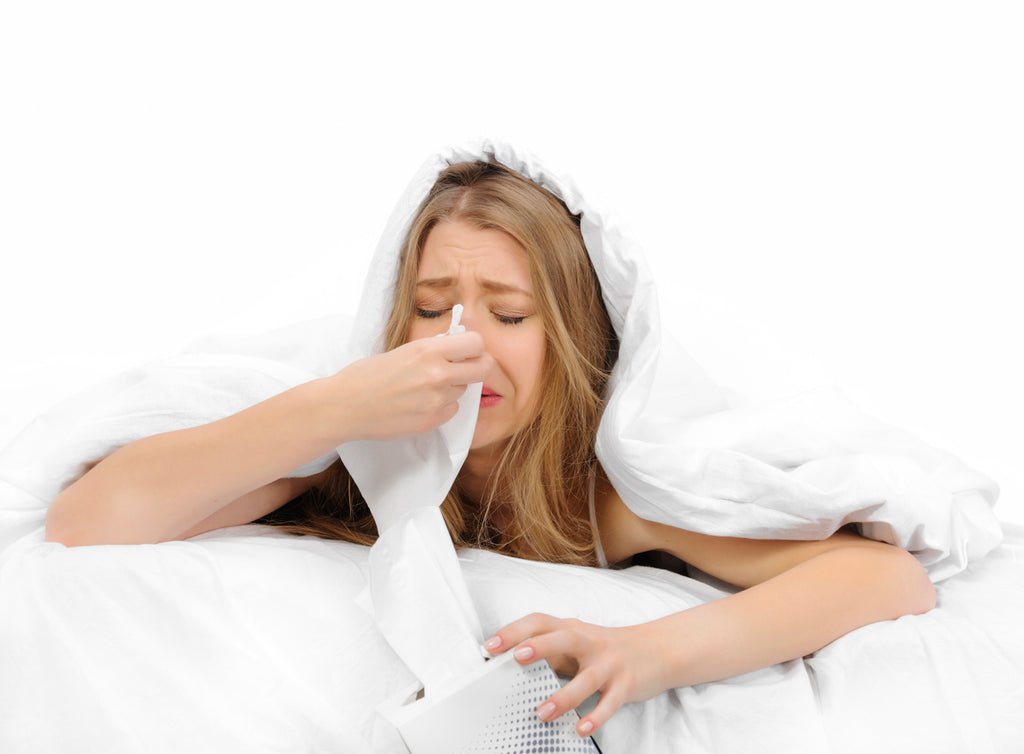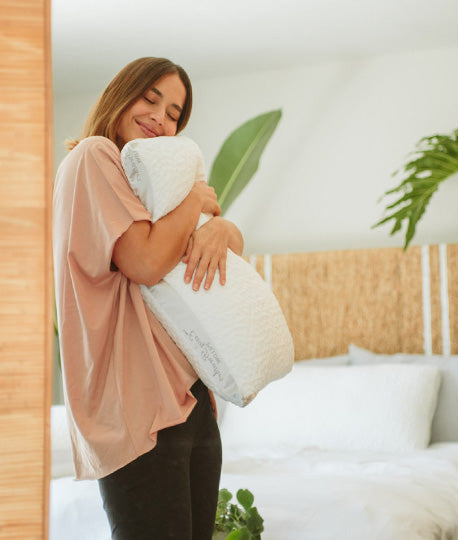Mattress Mold: Why Your Allergies are Worst In the Morning or While Sleeping


Allergies are something that almost everyone struggles with. Some people have seasonal allergies that come and go with the local tree pollen, and some have allergies year-round from common plants or even dust in the air. However, sometimes your allergies come and go in a far more suspicious pattern, especially when there are signs of mold in your home.
Allergies are always triggered by something. An irritating particle floats in the air and gets into your sinuses. This causes the usual itching, runny nose, watery eyes, and other standard allergic symptoms. But those itchy particles have to come from somewhere. If your allergies are worst at work, you might suspect the potted plants or dust in the HVAC system. But when your allergies are worst only when you're at home, something terrible has gone amiss. And all too often, that something is mold releasing irritating and even potentially dangerous spores into the air.
But what about when your allergies are worst in the morning when you wake up, and sometimes at night after you lay down to sleep? Where is the cause of the hidden allergens, then? Unfortunately, this can be a clear sign that mold has begun growing in your mattress.
Allergies in the Bed
Have you ever thought about what is inside a mattress, your pillow, or hiding in old pillowcases? Every night you lay yourself down in the same bed, a bed you've probably had for several years along with a mismatched assortment of bedding you've collected over time. Every night, you nestle your head into the same pillows and stretch out on the same mattress. And then when you wake up itching, drowning in mucus, or sneezing your head off.
If you find yourself suffering from allergy symptoms in the night, or that your allergies are always the worst after waking up, the most likely cause is that you are surrounded by allergens while you sleep.
Your mattress or pillow can be filled with dust mites or mold spores. And they don't just hide down there innocently making your mattress heavy over time. You kick them up when you roll in the bed, you breathe them through your pillow. And that's why you're wake up sneezing and miserable every single morning, though the symptoms clear once you're up and out of the house.
How the Allergens Got There
So why is your bed full of allergy-triggering mold when the rest of your house seems fine? First, you don't actually know that this is true. Your mattress may simply be the primary vector of exposure. Mold behind your walls, for example, takes a much longer time to start creating symptoms in a home's residents because the spores must travel a further and less direct route. But mold in the mattress releases spores every time you roll over, or even make the bed.
Simply speaking: it's hard to wash a mattress. Every season, a certain amount of dust, pollen, mold spores, and anything else in the air will settle onto your mattress. Then you sleep and it is ground in. Mold spores will even burrow their way in to find a safe, dark place to grow. More gets in every time you make your bed and the mattress and pillows are exposed to the air for a few hours without sheets.
If your mattress has ever been damp, or if you live in a humid climate, mold in the mattress is an even greater risk. There are always a few mold spores hanging in the air and they will start a spore-producing colon anywhere moist and porous enough to grow. An even slightly damp mattress is the perfect home for opportunistic mold. Especially if your home already has hidden colonies between the walls, in the bathroom, or growing on the window sills.
Getting Rid of Mold & Morning Allergies
So what is the solution? After all, you can't transport your mattress into an alternate dimension every time you change the sheets. Mold spores and other allergens will find their way in and the mattress may already be home to a spore-producing colony. But you crave a sneeze-free night's sleep and know that mold can eventually become toxic in cases of prolonged direct exposure. Fortunately, there are ways to solve the problem for good.
Toss Your Moldy Mattress
First, you'll probably need to replace your mattress and pillows. While there are methods that can remove allergens from a mattress, they're mostly more trouble than they're worth. And if your mattress is over five years old, then it's already time to seek a new one, and not just for your own comfort. Mattresses get worn out, warped, and generally lumpy over time. Especially if you're working with an old-school stuffing-and-springs type of mattress.
Mold inside your mattress releases spores every time you sleep, so it's no surprise if your allergies are worse at night or when you first wake up in the morning. Time to toss that sucker and get yourself a new hypoallergenic mattress! And maybe consider a few ways to prevent mattress mold in the future since there's mold hiding somewhere in your house already.
Hypoallergenic Covers
Once you have a new mattress, be sure to wrap it in a hypo-allergenic cover immediately. Get zip-up hypoallergenic covers for your pillows as well. These will prevent mold, pollen, dust mites, and other allergens from getting through the cover and embedding deeply in your mattress and pillows. In fact, you only need to wash hypoallergenic covers twice a year, along with regular washings of your sheets, to keep the allergens at bay.
Antifungal Essential Oil Spray
Another interesting and aroma-therapeutic option is to make use of natural essential oils. Some essential oils, like tea tree, thyme, and cinnamon, are naturally anti-fungal and will discourage new mold from growing in your fresh new mattress. A few sprays before you put on the cover can keep it smelling wonderful and fungus-free for years of comfy allergy-free sleep.
If you're waking up with streaming eyes and constant sneezing every morning, there's something lurking in your mattress. Allergies always have a source, and at home, that source is often hidden mold. The good news is that you can make it stop. Those morning allergies aren't a fact of life, they're causal. By replacing the mattress and remediating your household mold, you can kiss sneezy mornings goodbye. Contact us today for more great tips on how to get better, deeper, blissfully dream-filled sleep.




